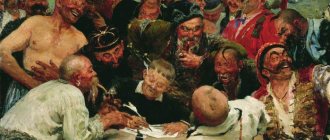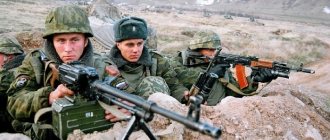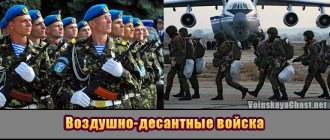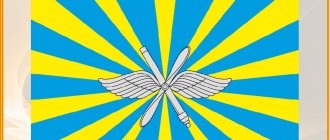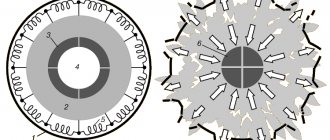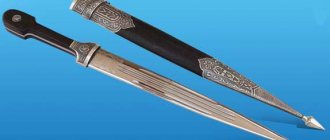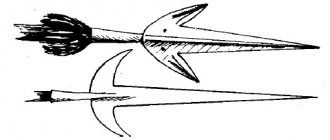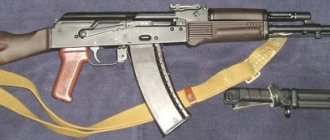Bow and arrows
In the 16th century, the coat of arms of the Zaporozhye Sich depicted a Cossack with a musket on his shoulder. The bow and arrows, which were part of his basic combat kit, began to fade into the background with the development of firearms. This did not prevent the Cossacks from going down in history as excellent archers. The Khan's son was killed with a bow when he and part of his army tried to capture prisoners near Menzhelievka in 1679.
The bow was only withdrawn from service at the end of the 17th century. It was replaced by guns of various types, which were called self-propelled guns. The Cossacks first armed themselves with them in 1511, when Evstafiy Dashkovich was hetman. This information appeared thanks to the historian Ludwig Zeddeler.
Evolution of the dagger
The main short weapon of the Kuban Cossack was the dagger. Its history is very ancient and is connected with the ancient Scythian akinak. But there is an opinion that the dagger is the ancestor of bone products. But it’s hard to argue here; any blade is a descendant of an ancient bone knife.
Thanks to its weight proportions and successful design, the dagger took the place of the main short auxiliary weapon among the Cossacks. The blade has survived many generations and is still in use today. As already noted, there were two types of daggers.
The straight blade of the kama was double-edged and was a cutting and piercing object. A correctly executed dagger has a thickening in the front part - elman. Thanks to it, the penetrating ability of the product increases.
The simple and universal form of the dagger allowed it to remain the uniform of the Cossacks to this day.
Officially, the Kuban dagger became an element of the form in 1840. But in reality it was used up to this point.
The Cossacks really liked the product of the Black Sea Cossack Army. It had a good handle. It could be used with a special grip, in which the end of the handle rested on the palm and the handle itself was passed between the middle and ring fingers.
Cossack daggers.
Ratishche
The pike, as well as the spear, were a very common weapon of the Cossacks and were used throughout almost the entire existence of the Cossacks. The shaft of the weapon was made of light wood, painted and, for ease of use, equipped with a belt loop.
Their tips had different shapes, some had a transverse membrane. This made the process of extracting a hostile (a common name for a spear and pike) from a pierced enemy easier. They could be used by soldiers instead of bridges during the crossing.
Varieties
The Don whip has a special feature - at the junction of the whip with the handle, it is intercepted by metal rings. The length of the handle is 30-40 cm, which is equal to the distance from the bend of the elbow to the middle of the palm. The thickness is such that the handle fits well in the hand. Total length – 80-90 cm, weight – on average 350 g.
The Kuban variety has a small handle of 15-20 cm, braided with straps that turn into a whip, which distinguishes it from the Don. The ratio of the length of the handle to the flexible part is 1/3-4. It was traditionally made from undyed rawhide, but now you can buy a whip made from leather of different types and colors.
The Kalmyk variety of the whip was distinguished by the fact that the flexible part was wound around the handle from the side. For some, the whip was a stiff leather whip. The Kalmyk variety is close in design features to the Don variety and differs only in the way the whip is attached to the shaft. The Kalmyk whip has a flexible part that is not woven, but assembled from straps using the sewing method. It was used when hunting wolves and hares.
Sabers and Janissary
Engineer and cartographer Guillaume de Beauplan noticed that when going on a campaign, each Cossack always took with him a pair of arquebuses and 6 pounds of gunpowder. The warriors' shooting accuracy from them was very high.
The source called “Chronicle of the Samovidets” says that the Cossack’s combat kit included:
- sabers
- spears
- butts
- pistols
- homemade
They loved to show off their sabers and decorated them with silver and gold. Over time, it became a symbol of their courage and bravery. Not only Ukrainian, but also foreign sabers were used.
Most of them were Turkish, Oriental and Iranian. Thus, in the 17th century, a saber called the pala, a type of Turkish saber, appeared. Its width was 55 mm, the thickness of the butt was 1 cm, and the length was 70 cm.
Each of them had four pistols, which the Cossacks called pistols. They wore two of them in holsters attached to their trousers, and two in their belts.
In the 16th and 17th centuries, the Cossacks called several types of weapons samopals. These were:
- European arquebus
- Moscow arquebus
- Turkish gun
The last one on the list had a caliber of 12.5 mm or larger, fired stone bullets, and later lead. This type of weapon was used in Turkey by the Janissary infantrymen, and the Cossacks, without thinking twice, dubbed it the “Janissary”.
The long-barreled design of the gun was equipped with a matchlock or flintlock and allowed it to be fired at more than a hundred steps. This was greatly appreciated by the Cossacks, and she immediately became popular with them.
What is a Cossack whip
This is a short lash woven from thin leather straps that gradually tapers towards the end. A flat round part, the so-called slap, is attached to it. It protects the horse's skin from injury when struck. Instead of a slap, loose thin laces could be left at the end, which performed the same role.
Sometimes a lead plate or other weight could be placed in the slap, which was a kind of bag. The insert increased the force of impact, in this case it was possible to use the whip as a combat strike weapon and strike. Although they were painful, they did not cause much harm. It was difficult to kill with such a weapon.
The Don whip is an indispensable attribute of the Cossacks, a tool for controlling a horse. It was made of leather, strips numbering 8 were woven together, forming a flexible whip, which was attached to a wooden handle, also braided with leather straps. The ratio of the length of the whip to the handle: 2 to 1.5.
Impressive firepower
The “janissary” was replaced by a musket. The first versions weighed 8-10 kg and involved shooting using a stand. At first only the infantry had them.
At the end of the 17th century it was improved and mounted Cossacks began to use it. A little later, a carbine appeared, a shortened and lightweight version of the musket.
The Cossacks had an impressive arsenal of firearms. There is historical evidence from 1691 informing about the removal of weapons stocks from the fortress called Novobogoroditskaya. The list includes:
- more than 2 thousand self-propelled guns
- 23,000 hand grenades
- forty-nine guns
- about 600 pounds of lead
- more than 300 pounds of gunpowder
Equipment of a walking Cossack. 2. Key for cocking the musket wheel lock. 3. Wallet. 4. Bullet pouch. 5. Bag (“sack”) for household small items. In it, the Cossack carried everything that could be useful on a campaign or in battle. 6. Single prong fork. 7. Spoon with cover. 8. Minting. 9. Axe. 10. Natruska. Grinded gunpowder was stored in it for adding to the musket shelf. Natruski were made of bone or wood in the form of stylized horses, with a raised tail and a head that served as a plug. In the upper part of the horse figurine there are holes for hanging the natruka from the belt. 11. Powder flask. The dominant type of powder flask is the “horn of wealth.” From the middle of the 17th century, powder flasks made from cow bones became popular. They stored granulated gunpowder. Some powder flasks had a rotary dispenser for a measure of gunpowder. 12. Bandalet. A shortened carbine that was worn over the shoulder on a bandoleer sling. A ramrod attachment for unloading a gun. 14. Bipod (Fornet). 15. Wire for cleaning the pilot hole. 16. Horny powder flask. 17. Bullet. 18. Arquebus. 19-20. Lyadunki. The finished charges were stored in a bandoleer - a lyadunka. The paper cartridge contained one shot's worth of gunpowder and a bullet. Wealthy Cossacks used metal shoulder pads, while most used wooden or hard leather ones. 21. Equipment of a mounted Cossack. 22. Pipe with pouch and barrels.
